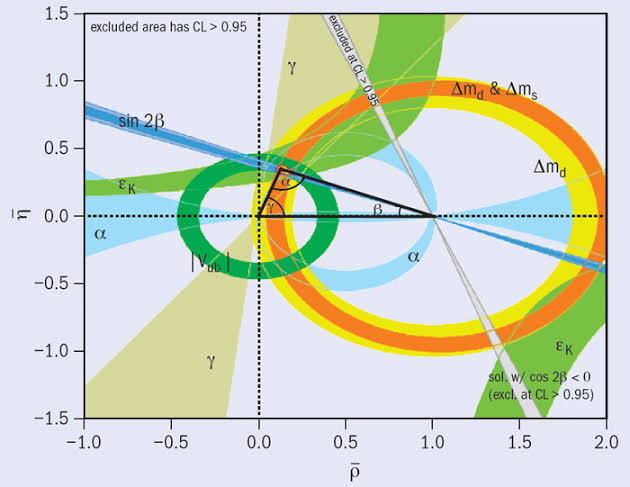Special Issue on CP Violation as a probe of New Physics beyond Standard Model
LETTERS IN HIGH ENERGY PHYSICS
Call for Papers
 Charge Conjugation Parity (CP) symmetry is not a symmetry of nature and it is not even an approximate symmetry. In fact, CP Violation (CPV) is an essential ingredient to understand the matter-antimatter asymmetry in the Universe. At the moment, CPV has been observed only in non leptonic decays of kaons, B and Bs and recently in D mesons. In the leptonic sector, the T2K collaboration has reported a measurement that shows an indication of CPV in the neutrino sector at 3 sigma confidence level. In the standard model (SM) there is a single phase in the CKM matrix that is responsible for all CP violating phenomena. It is quite likely there can be new CP violating weak phases in extensions of the SM with new complex couplings. Hence, CPV measurements are excellent probes of beyond SM physics. CP Violating phenomena can be explored in the quark and in the lepton sector. The presently running experiments like Belle II and LHCb and their next upgraded phases may offer unprecedented opportunities to observe new CP violating phenomena. In the lepton sector, experiments might reveal new sources of CP violation.
Charge Conjugation Parity (CP) symmetry is not a symmetry of nature and it is not even an approximate symmetry. In fact, CP Violation (CPV) is an essential ingredient to understand the matter-antimatter asymmetry in the Universe. At the moment, CPV has been observed only in non leptonic decays of kaons, B and Bs and recently in D mesons. In the leptonic sector, the T2K collaboration has reported a measurement that shows an indication of CPV in the neutrino sector at 3 sigma confidence level. In the standard model (SM) there is a single phase in the CKM matrix that is responsible for all CP violating phenomena. It is quite likely there can be new CP violating weak phases in extensions of the SM with new complex couplings. Hence, CPV measurements are excellent probes of beyond SM physics. CP Violating phenomena can be explored in the quark and in the lepton sector. The presently running experiments like Belle II and LHCb and their next upgraded phases may offer unprecedented opportunities to observe new CP violating phenomena. In the lepton sector, experiments might reveal new sources of CP violation.
Topics may include but are not limited to:
- CP Violation in the quark sector:
- CP violation in the meson mixing: B system, D system, and K system.
- Direct CP violation in the meson decays: Nonleptonic decays and semileptonic decays.
- CP violation in the hadronic decays of hyperons, charmed and bottom baryons.
- CP violation in the lepton sector.
- CP violation in the combined sectors.
Lead Guest Editor
Alakabha Datta
Department of Physics and Astronomy, University of Mississippi, Oxford, MS 38677 USA
Guest Editors
Danny Marfatia
University of Hawaii at Manoa, Honolulu, USA
Hai-Yang Cheng
Institute of Physics, Academia Sinica, Taipei, 11529, Taiwan, ROC
Bhubanjyoti Bhattacharya
Department of Natural Sciences, Lawrence Technological University, Southfield, MI 48075, USA
Gaber Faisel
Department of Physics, Faculty of Arts and Sciences, S ¨uleyman Demirel University, Isparta, Turkey
- Authors should carefully read over LHEP Author Guidelines and can submit their manuscripts through http://journals.andromedapublisher.com/index.php/LHEP/
- Closing date will be 1st of January, 2022
- For inquiries, please contact us at lhep@andromedapublisher.com



